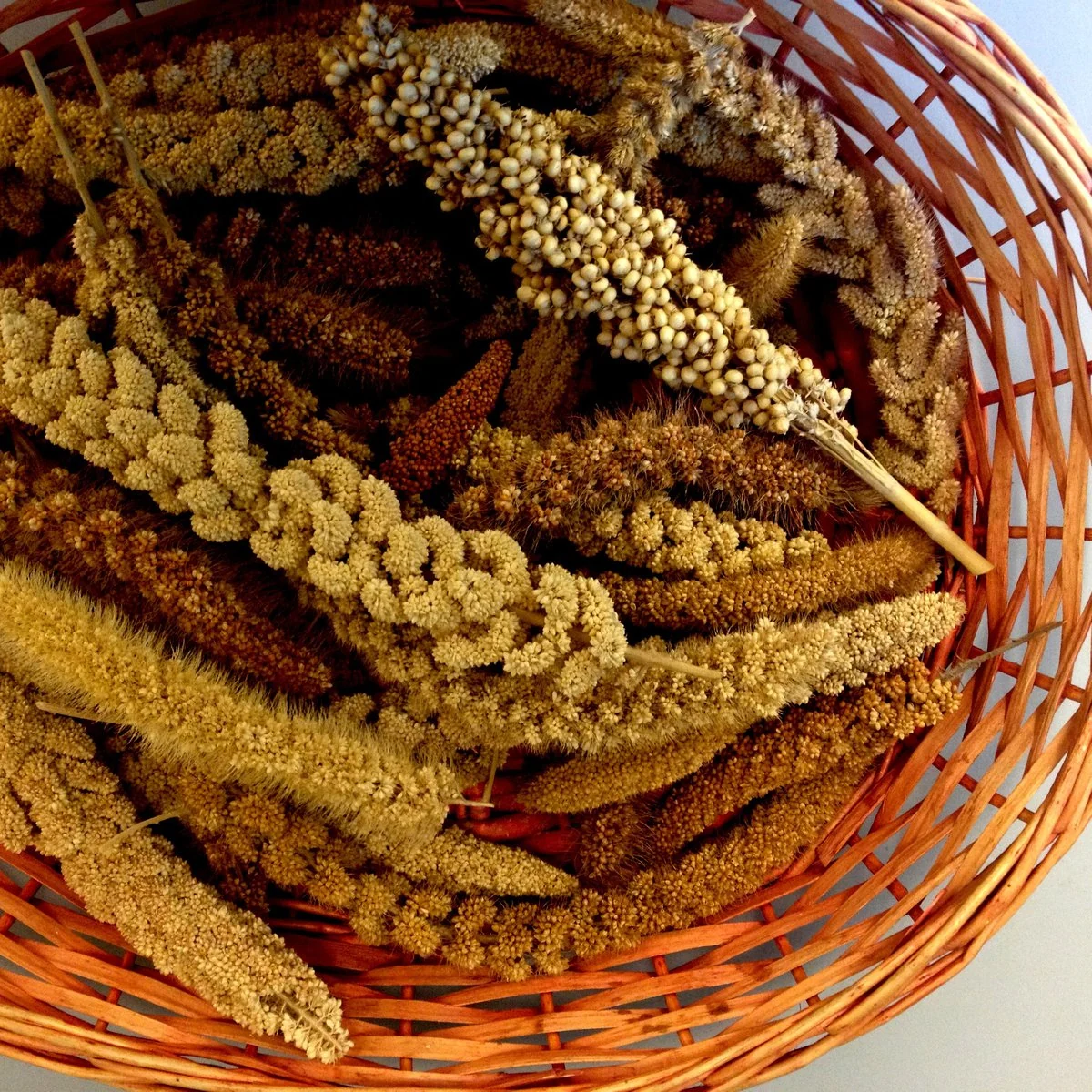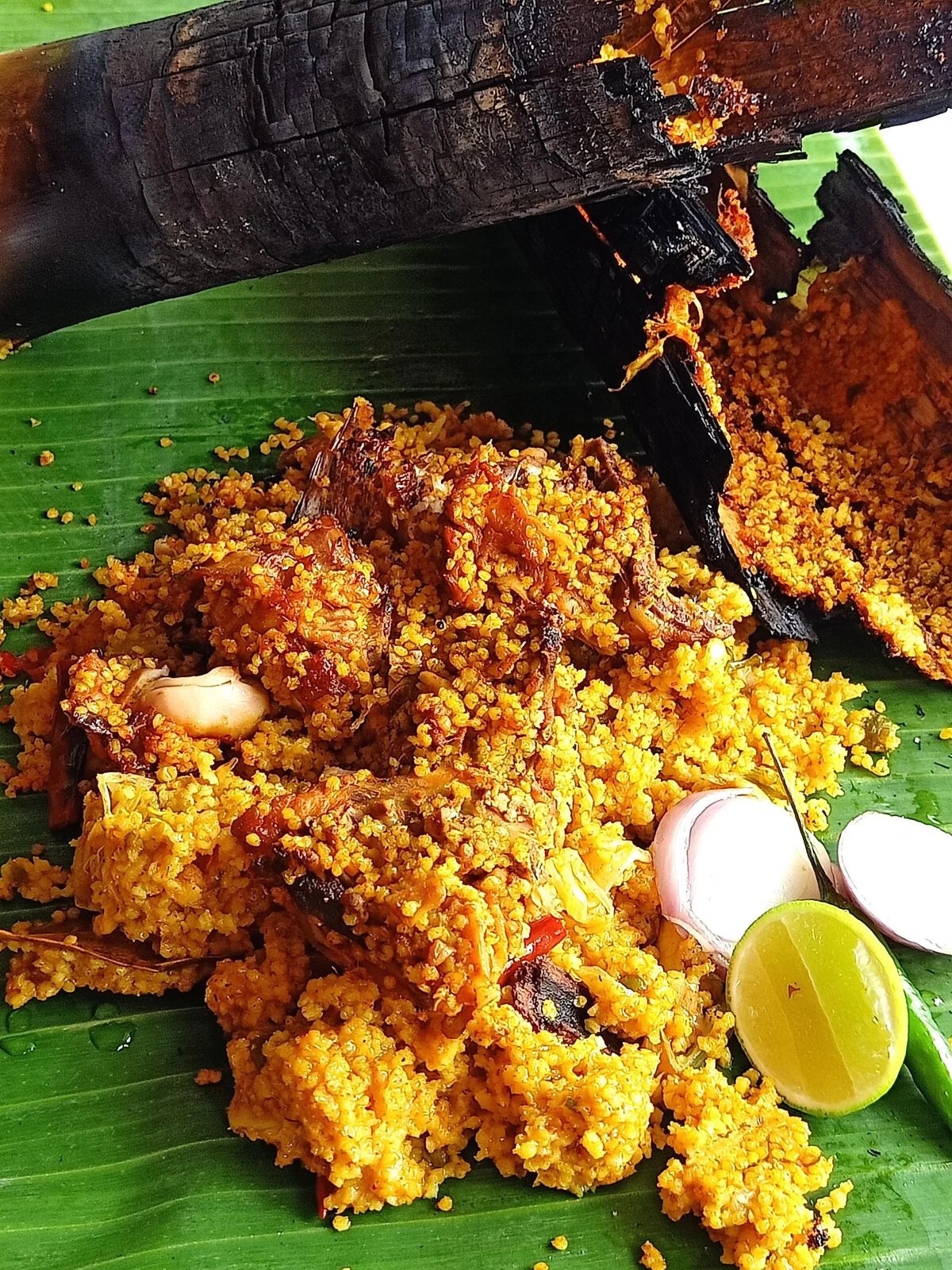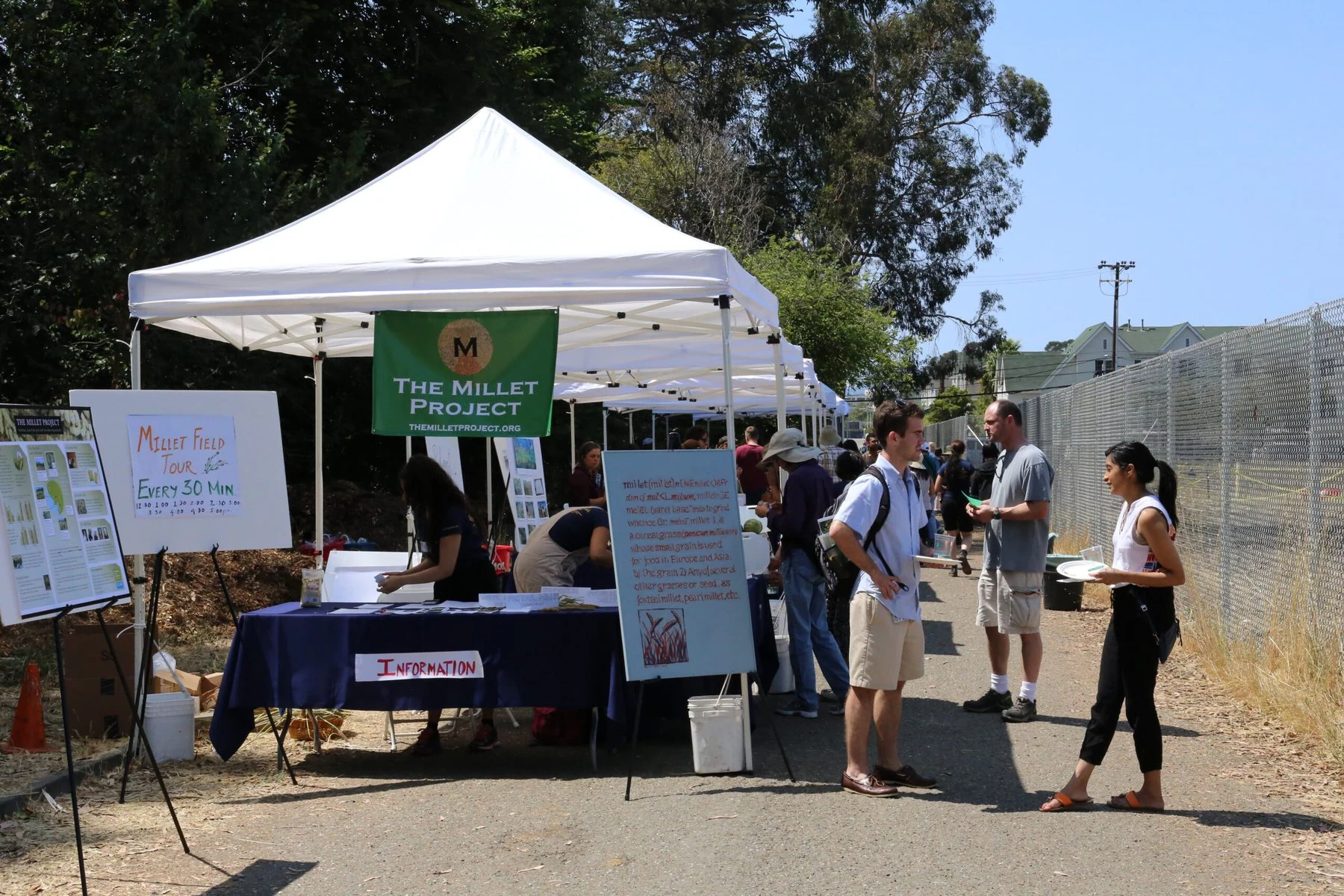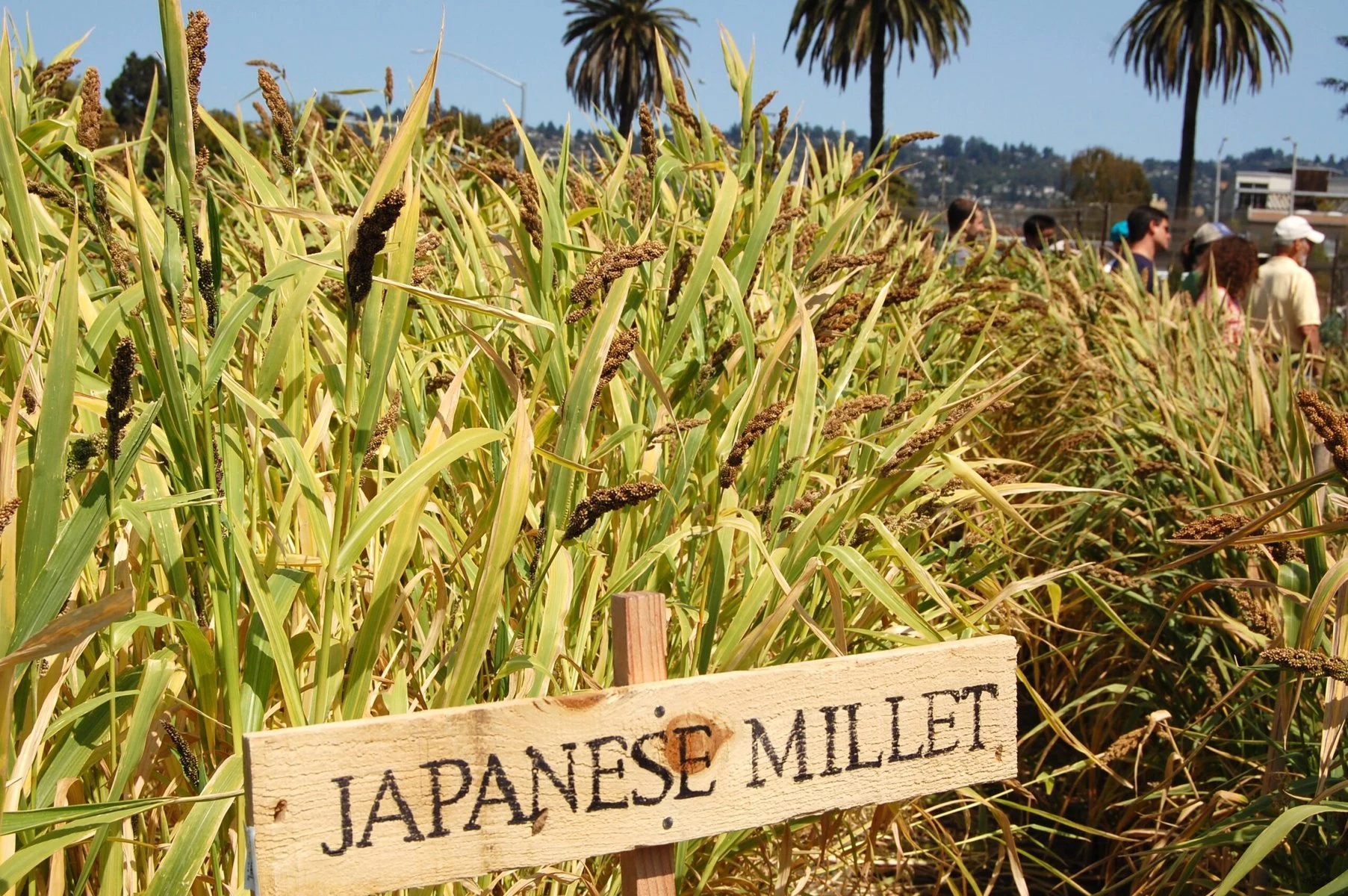In the last few years, farmers all over India have been going against the grain (quite literally) to cultivate millets in a bid to protect their livelihoods against the brutal impacts of climate change.
The term millets refers to a group of nutritionally dense ancient grains — small seeded grass from the Poaceae family — known to be hardy and drought-resistant. They require much less water than many other crops, including rice and wheat. Millets such as sorghum, kodo, pearl millet and finger millet were staples in several parts of Africa and Asia, including India, for many millennia.
Until they fell out of fashion, that is.
In an optimistic (but misguided) fit of policy making in the 1960s, the Indian government promoted high-yielding varieties of grains like rice and wheat, along with regular use of pesticides and fertilizers. Known as the Green Revolution, this social project aimed to alleviate hunger and poverty by rapidly increasing agricultural produce in the newly independent country.
However, this also meant that many native crops, including millets, disappeared from the fields, replaced by quick and easy cash crops. This, in turn, led to a loss of agricultural biodiversity over time. (It also brought about social and economic inequity, as highlighted by the recent farmer protests in north India.) Within a single generation, millets came to be considered culturally unacceptable, denigrated as poor man’s food, consumed only in rural areas and by people who worked physically demanding jobs.
Recently though, there has been a government-led, widespread stimulus for both the cultivation and consumption of millets across the country. This campaign reached its crescendo last year when the United Nations declared 2023 the International Year of Millets, with the objective of increasing awareness about the sustainable nature of millet farming as well as their nutritional superiority.
“Millets such as jowar (sorghum) and bajra (pearl millet) are typically C4 plants, which are efficient users of water and better at tolerating heat, as compared to C3 plants such as wheat, rice, oats and barley,” says Amrita Hazra, associate professor at the Indian Institute of Science Education and Research in Pune, and founder of The Millet Project, which experimented with introducing millets to farms and plates in Northern California.

This, she explains, has a direct connection with the deepening climate crisis that is causing erratic weather patterns across India, destroying crop yields and leaving farmers debt-ridden. “As climate change predictions entail overall higher global temperatures and more extreme conditions with regard to availability of water,” Hazra says, “cultivating millets will introduce viable alternatives and diversity to the cereal crops that we eat.” According to a 2021 study, a shift to millets could save India 50 million metric tons of greenhouse gas emissions and 300 billion cubic meters of water each year.
Given how climate change has now been shown to impact agricultural productivity and, therefore, food security all over the world, the increased cultivation of resilient millets only makes sense. Add to this the fact that millets encompass a wide variety of cereals, which strengthens their genetic diversity. As Vilas Tonapi, director of the Indian Institute of Millets Research (IIMR) has said in an interview, since monocultures have driven farmers to bankruptcy, there is now a need to go back to mixed and intercropping in order to ensure sustainable livelihoods to farmers.
There are also health benefits: Millets are not just gluten-free, but also rich in various micro and macro nutrients like iron, zinc, potassium and essential amino acids, while having a low glycemic index.

For all these reasons, India has been trying to return to its agricultural roots, with the revival of millet farming in various pockets. India is now the largest cultivator of millets worldwide, with over 12 million metric tons annually.
This push for millets has created scattered success stories all over India. Examples include a 10 to 20 percent increase in the annual income of farmers in the mountainous north Indian state of Uttarakhand, and uninterrupted agricultural output in some of the severely drought-ridden regions of the western state of Maharashtra. Another surprise triumph has been from Odisha, the coastal state in eastern India that routinely gets battered by cyclones and floods every year: The Odisha Millets Mission, launched in 2017, has been lauded by the Food and Agriculture Organization of the United Nations as an inspiring example. Among other benefits, this focus on millet cultivation has brought women farmers, especially from economically disadvantaged regions, to the fore.
Increased cultivation is all well and good, but basic supply-demand economics dictate that it needs to be supported by increased consumption. To this end, the Indian government has been promoting consumption by rebranding millets — once called coarse grains — as nutri-cereals and siridhanya or shri anna (grains of wealth). Millet-based snacks and ready-to-eat foods are now flooding the market, while several beer breweries, cafés and restaurants are upping the grains’ cool quotient by adding millet-based foods and drinks to their menus.
The flip side to this relentless spotlight on millets is that these indigenous foods are in danger of going hipster, and becoming so expensive that they’re inaccessible to those who have grown and eaten them for generations. “I think it would be a disservice for this to become a fad, which essentially would lead to the people — the farmers — growing these millets not being able to eat it themselves,” says Varnika Gangavalli, climate and policy lab lead at the Millet Revival Project, a research and documentation initiative that aims to encourage nuanced discourse about millets on both the farmer and the consumer’s side.

Project lead Sreyasi Mukherjee adds, “There’s also this notion about how millets are a poor man’s food, but if you go to just any shop online, millets are often more expensive than rice and wheat.” She also has a word of caution about this rush for millets to replace crops like rice and wheat, sugarcane and seeds, while ignoring the need for multi- and mixed- cropping. “It’s the same lack of balance which brought us to the stage today with rice and wheat in the green revolution,” she explains.
Their teammate at The Millet Revival Project, writer and editor Mukta Patil, agrees that there is a need for a balanced approach towards millets, urging against a tendency to “valorize” any single crop and project it as the ultimate food security solution. “Even within one region, you can grow diverse crops — like, say, millets will grow in the sloped lands, while rice will grow on the low-lying lands. And how we are able to embrace this diversity is what will make us food secure and help us be climate resilient,” she says.

And that diversity isn’t just good for humans — it’s good for the planet. In the words of Amrita Hazra, “Cultivating a large range of crops including millets also plays the important role of supporting a larger agro-biodiversity, which attracts different insect and bird pollinators and also enriches the soil’s microbial diversity. These are all important factors to prepare for climate change.”
The post Millets Are Making a Comeback in India appeared first on Reasons to be Cheerful.




